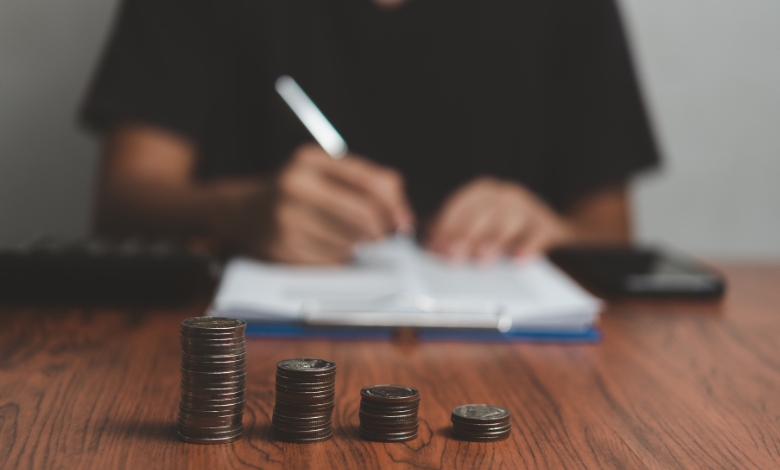Can you go to jail for not paying student loans? Learn how to avoid default, explore repayment options, and manage your student debt.
Student loans can bring up all kinds of feelings. For some, they’re the key to reaching their education and career goals. For others, they’re a source of stress and financial pressure.
I get it, I’ve been there. As a former student loan counselor, I’ve sat down with so many people, each dealing with their own struggles. That’s why I put together this guide, it’s for anyone feeling burdened by student debt.
We’ll break everything down into simple, clear steps. No confusing jargon, just what you really need to know. Let’s tackle how to avoid default, choose the best repayment plan, and navigate the ever-changing world of student loans together.
Take control of your student loans today. Use our Student Loan Calculator to easily understand your loan details and plan for the future.
Article Breakdown
The High Stakes of Defaulting on Student Loans
Let’s be real: if you default on your student loans, you’re not going to jail. But the financial and legal fallout is no small thing.
Credit Score Chaos
Did you know a ton of people are behind on their student loans? The New York Fed says it’s at an all-time high. It’s scary but not hopeless, there are ways to fix it.
Your credit score is a big deal, it’s basically your financial reputation. If you default on a student loan, it can seriously hurt your credit and make everyday things, like renting an apartment, buying a car, or even getting certain jobs, way harder. According to the New York Federal Reserve, a record number of student loans are past due, which is tough news for borrowers. I’ve worked with people whose credit scores were completely wrecked by student loan defaults. It’s devastating, but the good news is that recovery is possible, it just takes time and effort.
Collection Fees That Sting
When you’re having a hard time making payments, the last thing you need is to be hit with more fees. But that’s what happens when collection agencies step in, they pile on extra charges, making it even harder to get out of debt. It’s like being stuck in a hole and having someone dump more dirt on you. As a counselor, I always tell my clients to tackle their financial issues early, so they can avoid reaching this point.
Wage Garnishment and Tax Refund Seizures
Here’s a scenario I’ll never forget: a client of mine had her tax refund seized to cover defaulted student loans. She’d planned to use it for rent. Instead, she ended up borrowing from family. The federal government can garnish your wages, intercept tax refunds, and even seize federal benefits. It’s invasive, it’s stressful, and it’s avoidable.
Educational Roadblocks
Defaulting can make you ineligible for further federal financial aid. For those looking to return to school, this can be a dream-crusher. Imagine needing just a few more credits to complete your degree but being unable to afford tuition. The irony is bitter.
Recent Developments You Should Know
Navigating the student loan landscape means staying updated. Policies change, new programs emerge, and missing out could cost you. Here’s what’s new:
The “On-Ramp” Period Has Ended
During the pandemic, many borrowers had a 12-month grace period where missed payments didn’t result in penalties. That cushion ended on September 30, 2024. The result? A sharp rise in delinquent loans, as reported by Axios. If you’ve been relying on this period, it’s time to reassess your strategy.
Income-Driven Repayment Plans Are Back
Good news: the Department of Education has reopened applications for income-driven repayment plans (IDR). These plans cap your payments based on your income, making them far more manageable. Think of it as scaling the mountain of debt with a lighter backpack. I’ve personally guided dozens of clients through this process, and the relief they feel is palpable.
Practical Steps to Stay Ahead of Default
Now that we’ve covered the stakes and the recent updates, let’s talk solutions. Here are practical steps you can take today:
Explore Repayment Options
Federal loans come with flexibility if you know where to look. Here are your main options:
- Income-Driven Repayment Plans: Payments are adjusted to fit your income and family size. For some, this could mean payments as low as $0 per month. I remember one client who was a single mother with limited income. Signing up for an IDR plan was life-changing for her.
- Deferment or Forbearance: These options allow you to temporarily pause or reduce payments during financial hardship. Just remember, interest may still accrue.
- Loan Rehabilitation: This involves making a series of on-time payments to bring your loan out of default. It’s like repairing your financial credit. I’ve worked with many borrowers to navigate this, and while it’s a commitment, the results are worth it.
- Loan Consolidation: Simplify multiple loans into a single payment with a potentially lower interest rate. It’s not a one-size-fits-all solution, but it can be a game-changer for some.
Communicate with Your Loan Servicer
If you’re struggling, don’t ghost your loan servicer. They’re your first line of defense. Call them, explain your situation, and ask about tailored repayment options. I’ve had conversations with loan servicers that led to customized plans, you’d be surprised how much they’re willing to help.
Stay Informed
Subscribe to updates from the Department of Education or trusted financial resources. Policies shift, and what’s available today might not be tomorrow. I’ve made it a habit to check for updates quarterly. It’s a small effort with big rewards.
Seek Professional Advice
Financial advisors or student loan counselors can offer insights you might not have considered. Think of it like hiring a guide for an unfamiliar trail, their expertise can save you from costly missteps.
Finding Your Way Through Student Loan Repayment
Navigating student loan repayment can feel like being lost in a maze. Every turn seems to lead to another dead end. But imagine you had a map, clear, precise, and tailored to your journey. That’s what understanding your options can do. It’s like finally finding the exit and stepping into the light.
Student loans are like a leaky boat. If you focus only on bailing out water (making minimum payments without a plan), you’ll never fix the leak (address the root cause of your financial struggles). By sealing the leak (choosing the right repayment strategy), you can steer your boat toward calmer waters.
Facing Debt: Taking Control One Step at a Time
I’ll be honest. There were nights I stared at my loan statements, overwhelmed and convinced I’d never dig myself out. But then I took action. I researched, I asked questions, and I faced my fears head-on. Signing up for an income-driven repayment plan was a turning point. It wasn’t a magic wand, but it was a manageable path forward.
Fast forward a few years, and I’ve helped hundreds of clients take similar steps. The road isn’t easy, but every step taught me something valuable. My biggest takeaway? Procrastination is the enemy. The sooner you act, the sooner you regain control.
Frequently Asked Questions (FAQs)
Can My Tax Refund Be Seized for Unpaid Student Loans?
Yes. Under the Treasury Offset Program, federal and state agencies can intercept tax refunds to cover defaulted loans. This can be a rude wake-up call for many borrowers.
What Happens If I Ignore a Court Summons?
Ignoring a summons can lead to legal consequences, including potential arrest for contempt of court. Always respond promptly and seek legal advice if needed.
Are Income-Driven Repayment Plans Really Worth It?
Absolutely. They’re designed to make payments manageable and prevent default. However, they’re not without trade-offs, such as potentially higher interest over time. Evaluate your long-term goals before enrolling.
Key Takings
- Understand the consequences of student loan default to avoid financial setbacks.
- Stay informed about policy changes that may impact your loans.
- Proactively explore repayment options to regain financial freedom.
- Shift your perspective: use student loans as a stepping stone to success, not a burden.
Additional Resources
- Understanding the Pros and Cons of Student Loans: This article explores how student loans can help finance education while highlighting potential pitfalls like post-college debt.
- Pros and Cons of Student Loans: A detailed breakdown of the advantages and disadvantages of student loans, including funding opportunities and debt concerns.
- What should I do if my loan is in default: Guidance on steps to take if your student loan goes into default, including contacting the Default Resolution Group.



